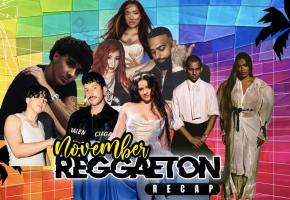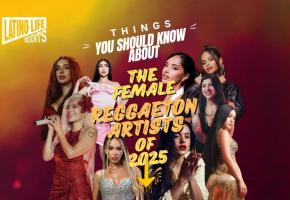It’s 9pm on a Saturday night in the famous Havana neighbourhood of Buenavista and the evening isn’t going well so far. In fact it’s threatening to be over before it’s even started…
We are waiting on the Avenida 41 for some kind of transport, but after 45 minutes of waiting the signs aren’t hopeful. Even worse, it’s record-breakingly cold (night time temperature 4C) and has started drizzling and, for Cubans, if you get too cold, let alone wet, it’ll make you ill, guaranteed. They tell me I am literally risking my life by bathing in cold water every day instead of waiting to heat saucepans on the gas. This explains why, for the first time ever since I moved here, everybody is indoors with doors and windows closed instead of out on the street, playing dominoes, partying or just generally shouting at each other. It’s dead, and our plan for a night out on the town looks like it soon will be too.
My friend, now getting damp and in fear of her health says we should give up and go home. It looks hopeless. Suddenly a driver of a lone yellow “gazelle” (one of the new minibuses bought by the government a couple of years ago in the latest initiative to alleviate Havana’s endless public transport crisis) stops for us and says for 20 Cuban pesos each (about 20 cents US at the unofficial exchange rate) he’ll take us to ‘La Habana’ (confusingly, this is how Habaneros refer to the city centre - think being at a bus stop in Islington and the driver says he’ll take you to ‘London’) This is a very generous offer as, with the Cuban peso in freefall on the black market, drivers are now asking anything up to 100 pesos for this journey, even more at night.
Destiny has intervened to save our evening but God only knows how we’ll get home again later on.
We are making all this effort because we’ve been tipped off that Rapzodia, the latest hot rap act, are going to play in a bar in Old Havana, the historic heart of the city. NOT the endless “Buenavista Social Club” loop of Cuban son and bolero music repeated by café and hotel bands throughout the tourist zone in better times. This is original material to a Cuban audience almost entirely under 30 and mostly under 25.
The gazelle leaves us at Curita Park, a rundown transport hub in the centre and we pick our way through dark streets to Calle Obispo, the main pedestrian thoroughfare of old Havana. In normal times Obispo would still be buzzing at this hour, with live music and mix of state-run and private enterprises trying to attract tourist money. Now it’s dark and almost abandoned apart from a handful of rather lost looking foreigners and small groups of police standing on street corners. For the first time ever I see that the legendary Hemingway-era bar “el Floridita”, the city’s number 1 tourist trap has only a handful of people in it. I worry for Rapzodia, in these conditions it’s hard to see how they’ll get much of an audience.
A few blocks later and we’ve found Fajoma, one of the new stylish bars opened by Cubans, often with investment from relatives abroad during the temporary optimism of the Obama years. Despite my fears, it’s heaving with beautiful young Cubans of every shade of brown, all immaculately dressed and coiffured. The bar has 4 floors with different themes and soon there’s an announcement inviting the audience up to the roof terrace to watch an ‘Afrocuban Fashion show’ which turns out to consist of a selection of flamboyant turbans in bright African-inspired textiles.
Meanwhile, the musicians are setting up downstairs to a buzz of anticipation. Amidst the crowd - 90% black, relaxed and friendly - three middle aged Scandinavian-looking male tourists are looking rather bemused. In most nightlife venues they’d be the subjects of intense attention but in this cool, Cuban-only vibe they are ignored. After some final sound checking the band are off – Daniela Pedroso, vocals and violin, Leonard Acosta, lyrics, Carlos Abdel on bass, Augusto Estévez on piano, Daniel Saúl on guitar, Theder Castro on drums, Oswald Cisneros on saxophone and Yudith Rojas, trombone - and everybody’s dancing.

The music itself is driving and infectious, sitting on a base mostly of funk but equally able to break out surprisingly into a section of Cuban rumba or montuno or even flamenco at any time. There's a contrast between rapper Leonard 's lighting fast, intricate rapping and singer Daniela 's pure, soaring vocals, enhanced with sharp, stabbing horn lines and very catchy choruses.
Through hip hop, guaguancó, montuno, reggae, ska, jazz, rock and a big dose of Cuban funk, Rapzodia has that unique Cuban quality of making you want to dance immediately. Everybody here will have struggled, like us or worse, to get here but now that’s all forgotten in the heat and joy of the moment. Hedonism in true Cuban style, with a new cool and conscious twist. Some lyrics centre on commentary on Cuban social and economic themes. In "Crazy" one of the band's first hits the lyrics complain:
"I'm crazy because I tell the truth, because I dress differently,
because I look for freedom. Lots of Wifi, lots of data,
easy to connect but no sign of meat in the freezer."
Leonard Acosta, the group’s founder who I meet after the gig, was influenced by Cuban rappers such as Los Aldeanos and Randy Acosta as as well as Cuban bands such as Habana Abierta and musicians like David Torrens, Kelvis Ochoa, Barbaro el Urbano Vargas, Mano Armada. ”I also listened to a lot of North American rap, like Kendrick Lamar, J. Cole, Kanye West.”
As an already well-known rapper, it was after being invited to the Pina Colada Festival back in 2018 and meeting well known bands such as Toques de Rio, Cuba Libre, Orishas, Alain Pérez that Leonard was motivated to form a band himself. With musicians he met at the festival he went back to Havana to look for others.
“I heard from the trumpeter and saxophone player who are friends of mine that the group needed a singer,” inserts Daniela. “The musical ideas behind the rap got my attention and made me want to join I’d also listened to a lot of black American music including rap, and I decided that’s where I wanted to fit in. I’d never studied singing but I could get by and so I joined and 3 years later I’m still here!”
Daniela’s modesty, however, betrays a background rich in musical heritage, which she admits on prompting. “My grandfather is the director of a well-known group here called Manguaré, so I practically grew up in rehearsals of traditional Cuban music and had learned their entire repertoire by heart by the time I was about six. My mum is also a musician so she helps me. They all but in, for example, my grandfather will comment that something sounds good, which means a lot, or my grandma will say it sounds great and will start dancing, or my aunt or cousin will make suggestions. Then my dad is the best critic of them all, so overall it’s a big help for me.”
Together the duo embarked on a creative journey. “It normally starts with Leonard or another member writing some lyrics and showing them to me. Then I help to create music and harmony for it and we take it to rehearsal.” Says Daniela. “We try to involve the whole group in the creative process as it’s very important for group cohesion.”
However, setting up and sustaining a band in Cuba is no easy feat in normal times, let alone with Covid. “Having no budget is always the biggest problem,” he says. “Although, sometimes, thanks to certain organisations such as the Hermanos Saíz or the Norwegian Embassy, it’s been possible to get funding to make videoclips. Also there’s always the problem of paperwork and professional certification here as it’s often a requirement to play in certain places. I’ve had to spend several years working on that.”
Indeed, in order to receive state support to make music in Cuba it’s necessary to follow certain procedures. For example that there’s a Cuban Rap Agency here and I’m interested in whether the band has had to engage
“I tried to get signed with the Rap Agency for several years without success but now thanks to a recommendation we are signing with the Popular Music Agency which is the parent organization.”
And yet despite having to navigate a complex system, the challenges of Covid and the current problems with public transport, Rapzodia has managed to develop a phenomenal audience, whose loyalty and enthusiasm I was full witness of tonight.
“Even though it’s raining, far to go or the sound system is bad, they make the effort to see us!” Leonard exclaims. “Our first singles, ‘Crazy’ with Kamankola and Acelerado, written by Daniela were really well received. Then we released ‘No mas muela’, so trying to bring a new single out every month has helped. Mostly we use social networks as young people here watch almost no TV.”
Later in the evening they play No Mas Muela, their latest song which bemoans the ability of political leaders to talk almost endlessly while nothing concrete changes. The videoclip for the song is certainly imaginative, a snapshot of raw Cuban reality, descending into the comedic and surreal, as it does here more often than not.
“It was made by Fernando Almeida, a great director and he wanted to give it a Surrealist theme and so there are references to Salvador Dali and also the film ‘el Perro Andaluz’. ‘Muela’ (note: in English “molar”) is a reference in Cuban slang meaning to talk too much and not act so the message of the song is “less chit chat, more action”!”
As the evening continues the repertoire turns towards lighter topics with softer, more romantic themes such as "Brown Sugar", a homage to black female beauty and "Acelerao", a party song which starts with Daniela's moody singing over a traditional Guaguancó Rumba rhythm on congas, clave and shekere before breaking out into a fast, funky chorus.
As it turns midnight we decide to slip out into the dark streets to try to find some way of getting home.
And the next steps for Rapzodia?
“As well as trying to complete more videoclips we are recording a 10 song album which we will try to sell through Cubadisco or international companies, and use as a platform to get more international exposure as well as opportunities to perform abroad.”
Check the band out on https://www.facebook.com/Rapzodiacuba/



















